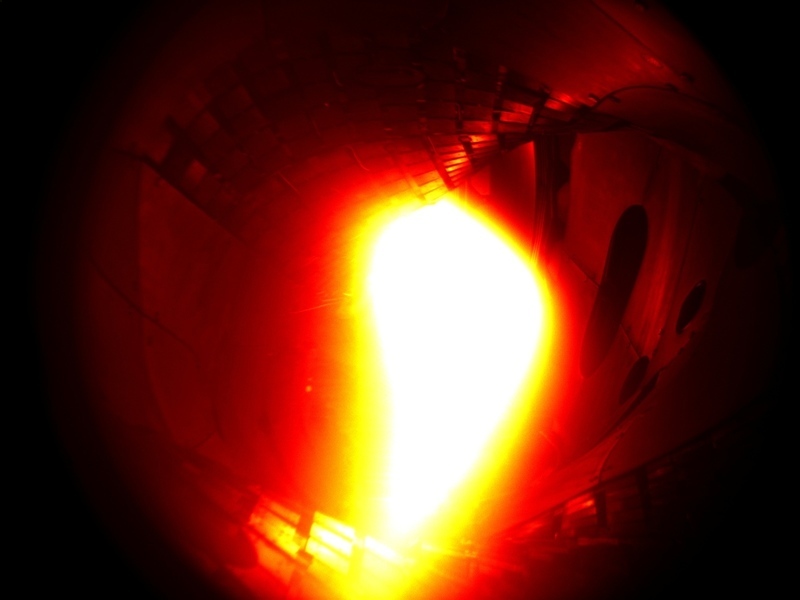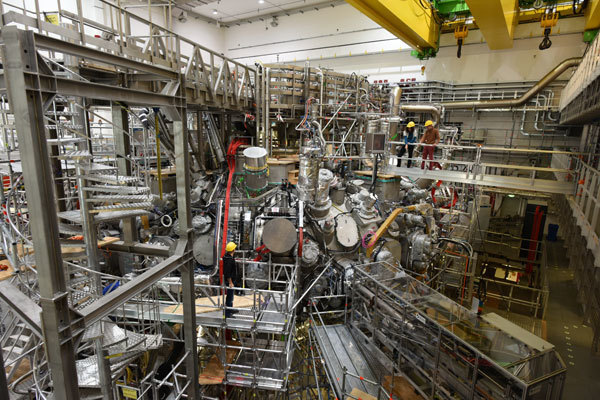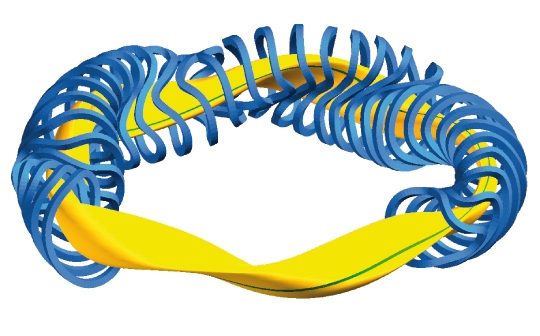
11th December 2015 Fusion reactor begins testing in Germany The first helium plasma test has been successfully conducted at the Wendelstein 7-X fusion device in northeastern Germany. Tests with hydrogen plasma will begin in 2016.
The first helium plasma was produced yesterday in the Wendelstein 7-X fusion device at the Max Planck Institute for Plasma Physics (IPP) in Greifswald, northeastern Germany. Following more than a year of technical preparations and tests, experimental operation has now commenced according to plan. Wendelstein 7-X, the world's largest stellarator-type fusion device, will investigate the suitability of this type of device for a commercial power station. After nine years of construction work and over a million assembly hours, the Wendelstein 7-X was completed in April 2014. Operational preparations have been underway ever since. Each technical system was tested in turn, the vacuum in the vessels, the cooling system, the superconducting coils and the magnetic field they produce, the control system, as well as the heating devices and measuring instruments. On 10th December 2015, the day had arrived: the operating team in the control room started up the magnetic field and initiated the computer-operated experiment control system. This fed around one milligram of helium gas into the evacuated plasma vessel, switched on the microwave heating for a short pulse of 1.3 megawatts – and the first plasma was observed by the installed cameras and measuring devices. The exact moment of ignition was captured in this video.
“We’re starting with a plasma produced from the noble gas helium,” explains project leader, Professor Thomas Klinger: “We’re not changing over to the actual investigation object, a hydrogen plasma, until next year. This is because it’s easier to achieve the plasma state with helium. In addition, we can clean the surface of the plasma vessel with helium plasmas.” The first plasma in the machine had a duration of one tenth of a second and achieved a temperature of around one million ºC. “We’re very satisfied”, concludes Dr. Hans-Stephan Bosch, whose division is responsible for the operation. “Everything went according to plan.” The next task will be to extend the duration of the plasma discharges and to investigate the best method of producing and heating helium plasmas using microwaves. After a break for New Year, the confinement studies will continue in January, which will prepare the way for producing the first plasma from hydrogen.
The Wendelstein 7-X is the largest fusion device created using the "stellarator" concept, which refers to the possibility of harnessing the power source of the Sun, a stellar object. It is planned to operate with up to 30 minutes of continuous plasma discharge, demonstrating an essential feature of a future power plant: continuous operation. By contrast, tokamaks such as ITER can only operate in pulses without auxiliary equipment. The Wendelstein 7-X is based on a five field-period Helias configuration. It is mainly a toroid – consisting of 50 non-planar and 20 planar superconducting magnetic coils, 3.5 m high – which induce a magnetic field that prevents the plasma from colliding with the reactor walls. The 50 non-planar coils are used for adjusting the magnetic field. It aims for a plasma temperature of 60 to 130 million K. Stellarators were popular in the 1950s and 60s, but the much better results from tokamak designs led to them falling from favour in the 1970s. Wendelstein 7-X, however, aims to put the quality of the plasma equilibrium and confinement on a par with that of a tokamak for the very first time, potentially offering a new pathway to reliable fusion power.
Comments »
|










